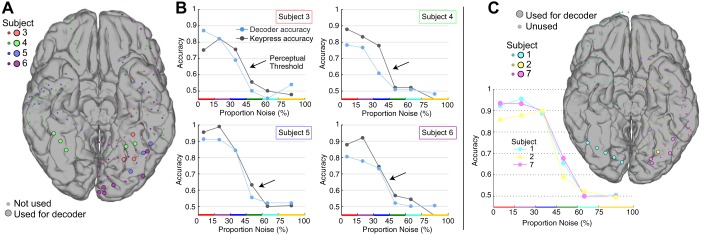Fig. 7.
Decoder performance mirrors subject choice, revealing that the physiological threshold explains the perceptual threshold. A simple decoder was built from localizer task responses and then used to decode single trials from the noisy task. A: the electrodes used by the decoder are plotted on a standardized brain. Inclusion criteria: r2 > 0.1, face or house localizer pictures vs. blank screen. B: decoder and subject keypress accuracy in 4 subjects, as a function of noise. Despite being based on a sparse sampling of the cortex and trained on a different task (localizer), the decoder performs nearly at the behavioral level of each subject. The physiological threshold clearly mirrors the perceptual threshold (indicated by arrow), and the perceptual and neurometric curves are strongly correlated with one another (P < 0.05 in all cases). C: behavioral data were not available for 3 subjects (subjects 1, 2, and 7), but decoding was robust and mirrored the other 4 subjects shown in A and B.

